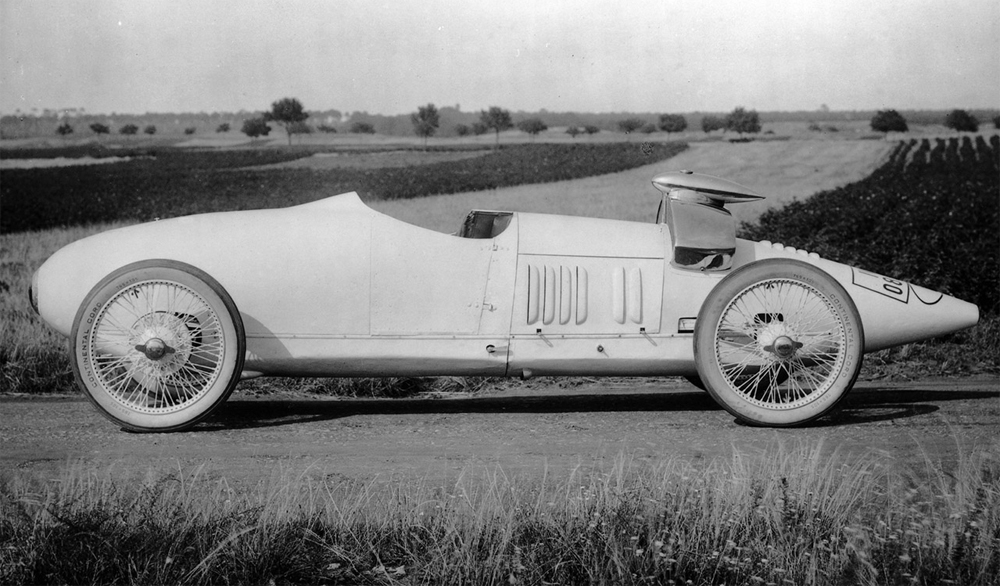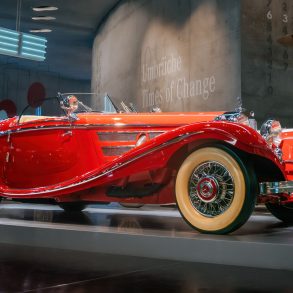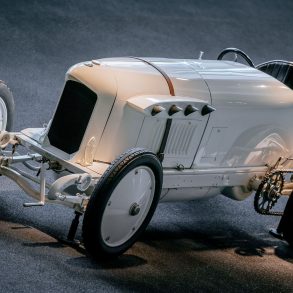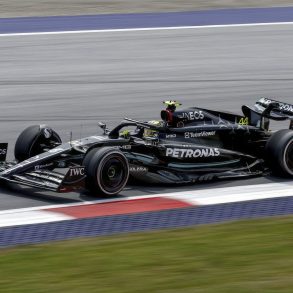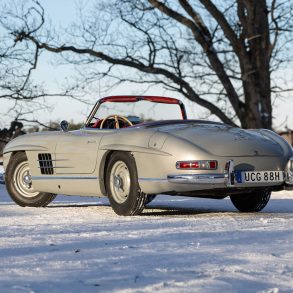Benz ‘Tropfenwagen’
Car: Benz/ Engine: Inline 6 Cylinder / Maker: Tropfenwagen Typ RH (RH = Rennwagen mitt Heckmotor) / Bore X Stroke: 65 mm x 100 mm / Year: 1923 / Capacity: 1,991 cc / Class: Grand Prix / Power: 90 hp at 4500 rpm / Wheelbase: 2,830 mm / Track: Front: 1400 mm Rear: 1300 mm / Weight: 745 kg / Top Speed: 185 kmh / Notes: 4-Speed Manual Transmission
In 1921 after World War I, Rumpler surprised visitors at the Berliner Automobile Ausstellung with his revolutionary ‘Tropfenwagen’ (teardrop vehicle), that resembled the gondola of a Zeppelin airship. Edmund Rumpler, was an Austrian automotive engineer who was well-known in post-war Germany as the manufacturer of the successful ‘Taube’ (Pigeon), a German warplane based on an original design by Igo Etrich. Rumpler also had experience in automobile design and manufacturing. In 1903, he had patented a swing axle rear suspension system. Rumpler’s efforts produced a car with an astoundingly low drag coefficient of only 0.28 (when tested in 1979). Its original rear-engine layout combined with independent rear suspension foreshadowed the future.
Rumpler’s concept was of historic significance but most people did not know what to make of this strange vehicle, one exception was Benz’s Berlin representative, Willy Walb, future race team manager at Auto Union who was intrigued by it’s possibilities. He convinced Benz to look at building cars with a similar design both for commercial and racing purposes. Karl Ludvigsen:
“Edmund Rumpler and his patent lawyers caused Max Wagner some sleepless nights. Not having a Rumpler license agreement, Benz had to use a rear suspension design that wouldn’t contravene Rumpler’s many patents. As a result the RH had a much more practical system. Its conventional differential was fixed on the frame. It drove the axle half-shafts through universal joints in spherical housings similar to those then widely used for the forward mounting of torque-tube axles.”
Developed under the guidance of chief engineer Hans Nibel, the Benz Typ RH had an advanced twin-ohc in-line six engine with 24 valves, electron pistons, twin Zenith carburetors, a built-up roller-bearing crankshaft, and roller big ends, which gave some 90bhp at 4500rpm, unblown. This engine was located between the cockpit (which enveloped the driver and riding mechanic), and the rear axle, which it drove through a three-speed gearbox mounted as a unit. Inboard rear brakes were employed, a separate crescent-shaped radiator was mounted above the engine cover, and the car had excellent stream-lining with a clean, rounded nose and tapering tail. The radiator mimicking the tall airboxes that are used in modern Formula One cars.
The car competed in only one major race, the Grand Prix of Europe at Monza on September 9, 1923. Three cars were entered for Fernando Minoia, Franz Hörner and Willy Walb. Two of the three cars finished with Minoia in fourth and Hörner in fifth though they were both waved off before they could finish the race due to the track being invaded by spectators. The cars were known for their handling but were underpowered when compared to the supercharged Fiats.
Perhaps if a blown engine had been used the results might have been different. As a small consolation the Monza organizers awarded Benz a medallion for their audacious design. The cars later competed in local events in Germany with a handful of hillclimb victories by Walb and later Mercedes works driver Adolf Rosenberger to their credit. On May 16th 1925 Rosenberger won the Tropfenwagen’s final race, the Rund um die Solitude and Benz’s rear-engined experiment was over. Despite their promising start at Monza, these Teardrop rac
The ‘Tropfenwagen’ were built in the Rumpler airplane factory in Berlin and after some initial commercial success – Rumpler sold a number of cars to a Berlin Taxi company – the sales slumped after a production run of only 100 units. One of it’s weaknesses was in engine reliability probably due to a lack of operating funds. The resulting financial problems forced Rumpler to sell his patents to the merged Mercedes-Benz company. Because Rumpler was Jewish, he was imprisoned after Adolf Hitler took power in 1933, and his career was ruined, even though he was soon released. Rumpler died in 1940, and the Nazis destroyed most of his records. A sad and somewhat ironic end for someone who built Germany’s first military airplane in the previous war.





